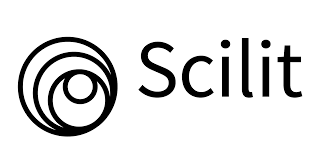The Utilization of Twitter in The Anticipation of Covid-19 Hoax News in Yogyakarta City
DOI:
https://doi.org/10.38043/commusty.v2i1.4979Keywords:
Twitter, Covid 19, Hoax, NewsAbstract
The contemporary era of openness has exerted a significant influence on social media platforms, particularly Twitter. This is mostly due to the platform's ability to facilitate the expression of opinions and the rapid dissemination of news by individuals. The act of expressing opinions necessitates the inclusion of the need to substantiate the validity of the information being conveyed. Data-driven information can be substantiated and expressed. During the ongoing Covid-19 pandemic, a substantial amount of information pertaining to the coronavirus remains ambiguous or has yet to be definitively established. The prevalence of misinformation is on the rise due to individuals' acceptance and dissemination of false information without conducting thorough research to ascertain its veracity. Consequently, the dissemination of false coronavirus information on social media, particularly Twitter, has occurred.
References
Ahmad, I., Yousaf, M. M., Yousaf, S., & Ahmad, M. O. (2020). Fake news detection using machine
learning ensemble methods. Complexity, 2020, 1-11. https://doi.org/10.1155/2020/8885861
Al-Rawi, A., Groshek, J., & Zhang, L. (2019). What the fake? assessing the extent of networked
political spamming and bots in the propagation of #fakenews on twitter. Online Information Review, 43(1), 53-71. https://doi.org/10.1108/oir-02-2018-0065
Basri, Hasan. 2017. “Peran Media Sosial Twitter dalam Interaksi Sosial Pelajar Sekolah Menengah
Pertama di Kota Pekanbaru (Studi Kasus Pelajar SMP N 1 Kota Pekanbaru”. JOM FISIP. 4, (2), 1-15.
Li, J. and Su, M. (2020). Real talk about fake news: identity language and disconnected networks of
the us public’s “fake news” discourse on twitter. Social Media + Society, 6(2), 205630512091684. https://doi.org/10.1177/2056305120916841
Liana, C., & Soemardjo, H. A. (2022). Media Literacy in the Family (Descriptive Study of parents’ Actions of SDIT ALFAUZIEN Depok Students in Assisting the Use of Media in Children). Journal of Communication Studies and Society, 1(1), 27-37. https://doi.org/10.38043/commusty.v1i1.3691
Nurudin. (2014). Indonesian Communication System. Jakarta: Raja Grafindo Persada.
Obeidat, R., Gharaibeh, M., Abdullah, M., & Al-Harahsheh, Y. (2022). Multi-label multi-class
covid-19 arabic twitter dataset with fine-grained misinformation and situational information annotations. Peerj Computer Science, 8, e1151. https://doi.org/10.7717/peerj-cs.1151
Pulido, C., Villarejo-Carballido, B., Redondo-Sama, G., & Gómez, A. (2020). Covid-19 infodemic:
more retweets for science-based information on coronavirus than for false information. International Sociology, 35(4), 377-392. https://doi.org/10.1177/0268580920914755
Sugiyono. (2018). Quantitative, Qualitative and R&D Research Methods. Bandung: Alfabeta CV. Sugiyono. (2016). Quantitative, Qualitative and R&D Research Methods. Bandung: Alfabeta CV.
Suyasa, I. M.., Putri, P. I. D., & Suparna, P. (2022). The Tradition of Cultivation Theory and The Spiral of Silence Media. Journal of Communication Studies and Society, 1(1), 17-21. https://doi.org/10.38043/commusty.v1i1.3697
Taufiqurrohman, Muhammad. (2018). Hoaks di Media Sosial Facebook dan Twitter dalam
Perspektif Undang-Undang Nomor 11 Tahun 2008 tentang Informasi dan Transaksi Elektronik dan Hukum Islam. Skripsi. (Tulungagung: IAIN Tulungagung).
Downloads
Published
How to Cite
Issue
Section
License
Copyright (c) 2023 2023

This work is licensed under a Creative Commons Attribution-ShareAlike 4.0 International License.















